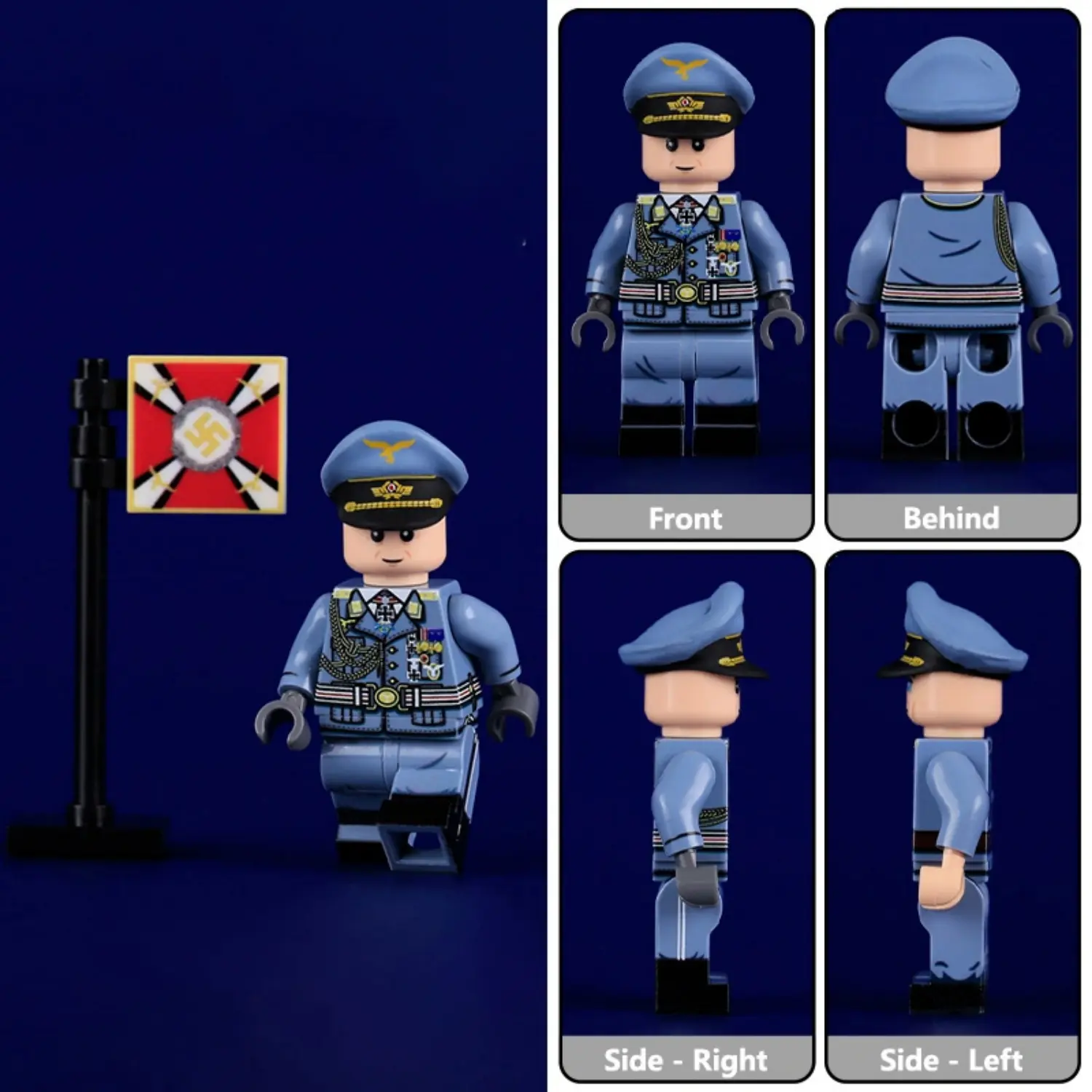This image displays a toy minifigure representing Robert Ritter von Greim, a high-ranking German Luftwaffe General and a World War I flying ace.
The figure is depicted in the formal Luftwaffe Service Uniform of a General Officer.
-
Headgear: He wears the Luftwaffe Blue Peaked Cap (Schirmmütze). The piping around the crown and the chin cords are Gold, which indicates the rank of a General.
-
Uniform: He wears the standard Luftwaffe blue-grey tunic (Tuchrock) with breeches and black boots.
-
Rank Insignia: The White and Gold Collar Tabs (Kragenspiegel) feature three pips (stylized wings) inside a wreath. This specific arrangement identifies his rank as Generaloberst (Colonel General), the second-highest rank in the German military, just below Field Marshal.
-
Decorations: The figure is highly detailed with specific historical awards:
-
The “Blue Max”: At his throat, just above the tie, hangs a blue cross. This is the “Pour le Mérite”, Prussia’s highest military order from World War I. Greim was a fighter ace in the First World War with 28 victories, and this medal is a key identifier for him.
-
Knight’s Cross: Below the Blue Max, he wears the Knight’s Cross of the Iron Cross with Oak Leaves and Swords, a high WWII award.
-
Aiguillette: He wears elaborate Gold Cords (Aiguillette) on his right shoulder, signifying a General Officer or high command staff status.
-
-
Accessory: The set includes a stand with a Command Flag. This square flag with the Swastika and eagles at the corners is the specific vehicle or command post pennant for a Generaloberst of the Luftwaffe.
Historical Background: Robert Ritter von Greim (1892–1945) was an experienced pilot and commander. He is historically significant for being the last Commander-in-Chief of the Luftwaffe. In the final days of the war (April 1945), he famously flew into besieged Berlin with pilot Hanna Reitsch, landing on an improvised airstrip near the Brandenburg Gate while under Soviet fire. In the Führerbunker, Adolf Hitler promoted him to Generalfeldmarschall (Field Marshal) and appointed him to replace Hermann Göring. He committed suicide shortly after being captured by American forces in May 1945.



Reviews
There are no reviews yet.